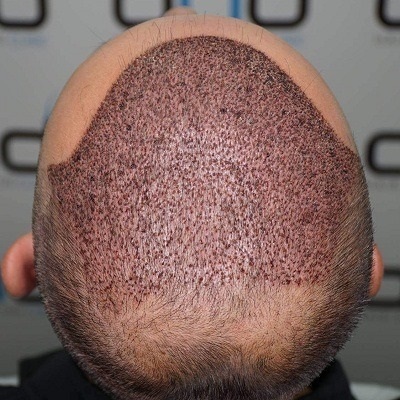Hair loss is often perceived as a concern exclusive to men, but many women also suffer from varying degrees of hair thinning and balding. Female hair loss can be equally distressing, affecting confidence and emotional well-being. As awareness and treatment options expand, many women are now considering surgical solutions. A common question that arises is: can women undergo hair transplant surgery? The answer is yes, but with careful evaluation and individualized planning. Those interested in options such as Hair transplant in Islamabad can benefit from modern advancements that cater specifically to the unique needs of female patients.
Understanding Hair Loss in Women
Hair loss in women does not usually follow the same pattern as male pattern baldness. While men often experience receding hairlines or bald spots on the crown, women generally face diffuse thinning across the scalp. This makes diagnosis and treatment planning different and often more complex.
Some common causes of female hair loss include:
-
Androgenetic alopecia (female pattern hair loss)
-
Hormonal imbalances (e.g., polycystic ovary syndrome)
-
Nutritional deficiencies
-
Stress or trauma
-
Medical conditions such as thyroid disorders or autoimmune diseases
-
Postpartum hair loss
-
Excessive styling or chemical treatments
Accurate diagnosis is essential to determine the best course of treatment and whether surgical intervention is appropriate.
Are Women Good Candidates for Hair Transplant Surgery?
Women can absolutely undergo hair transplant surgery, provided they meet the clinical criteria. However, not all types of female hair loss are suitable for surgical treatment. The key factors in determining candidacy include:
-
Stable Donor Area: Hair follicles are typically harvested from the back or sides of the scalp. Women must have a sufficient and stable donor area with healthy hair follicles.
-
Type of Hair Loss: Women with localized thinning or patterned hair loss (such as high hairlines or thinning at the crown) respond better to transplant surgery. In contrast, diffuse unpatterned alopecia may not yield optimal outcomes due to an unstable donor area.
-
General Health: Good overall health is essential for successful recovery and follicle survival.
A hair transplant specialist will conduct a thorough assessment, which may include scalp examination, blood tests, and in some cases, a biopsy to evaluate the condition of the scalp and follicles.
Hair Transplant Techniques for Women
The two most common methods used in hair transplant procedures are Follicular Unit Extraction (FUE) and Follicular Unit Transplantation (FUT). Both are effective for women, depending on individual cases.
-
FUE (Follicular Unit Extraction): In this method, individual follicles are extracted directly from the donor area and implanted into thinning or balding regions. FUE leaves minimal scarring and does not require stitches, making it a more appealing option for many female patients.
-
FUT (Follicular Unit Transplantation): This involves removing a strip of skin with hair from the donor area and then dissecting it into follicular units. Though it may leave a linear scar, it can be beneficial for patients requiring a higher number of grafts.
For women who wish to avoid shaving their heads for the procedure, partial shaving techniques or long-hair transplants can be used, especially in FUE. These approaches preserve the appearance during the healing phase.
What Results Can Women Expect?
Women can achieve excellent outcomes from hair transplant surgery, especially when treatment is based on realistic expectations and a medically sound foundation. The transplanted hair typically follows a growth cycle:
-
Initial Shedding Phase: Transplanted hair may shed within the first few weeks after surgery.
-
Dormant Phase: Follicles remain inactive for a few months.
-
Regrowth Phase: New hair growth starts around 3 to 4 months post-surgery and continues to improve for up to a year.
Final results often include increased density in thinning areas, natural hairline restoration, and improved confidence. However, success largely depends on the skill of the surgeon and patient adherence to post-operative care.
Considerations Before Surgery
Before opting for surgery, women should be aware of a few important aspects:
-
Medical Treatment First: In many cases, topical or oral medications such as minoxidil may be recommended prior to surgical intervention. These can help stabilize hair loss and support regrowth.
-
Psychological Evaluation: Hair loss can have profound psychological effects. Some women may benefit from counseling or support during the treatment journey.
-
Long-Term Planning: Hair transplantation does not stop ongoing hair loss. Some patients may need follow-up sessions or additional treatments in the future.
Advantages of Hair Transplant for Women
-
Permanent, natural-looking results
-
Improved hair density in specific areas
-
Minimal maintenance post-surgery
-
No need for long-term dependency on medications
Modern techniques have significantly improved the outcomes for women seeking hair transplant solutions. When performed by an experienced specialist, the procedure can deliver transformative results.
Conclusion
Hair transplant surgery is a viable and effective solution for many women experiencing hair loss. Proper diagnosis, careful planning, and selecting the right surgical approach are essential to ensure successful outcomes. Not every woman will be an ideal candidate, but for those who are, the procedure can offer a lasting improvement in hair density and self-confidence. For a detailed consultation and expert evaluation, consider visiting SKN Cosmetics clinic, where experienced professionals can guide you toward the most suitable hair restoration solution tailored to your individual needs.






